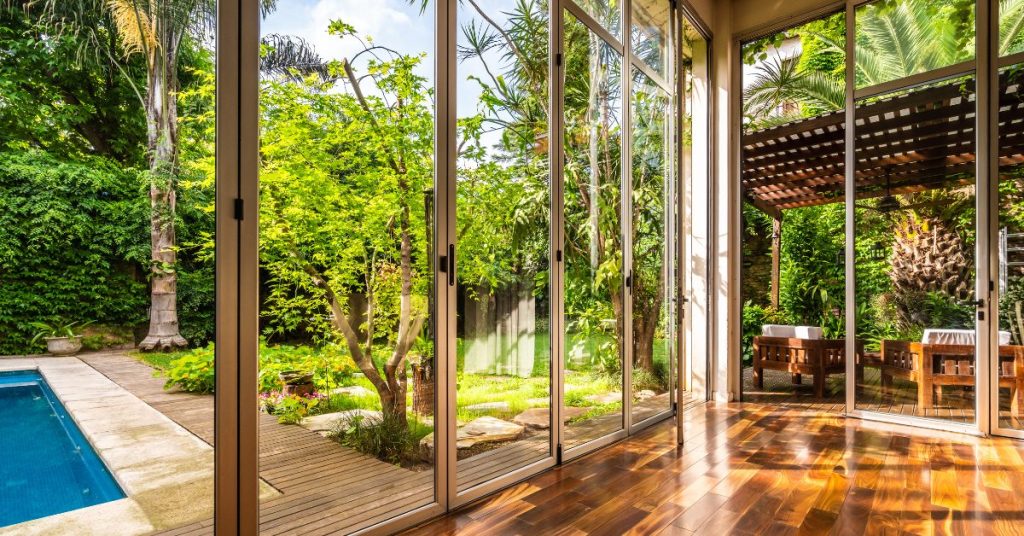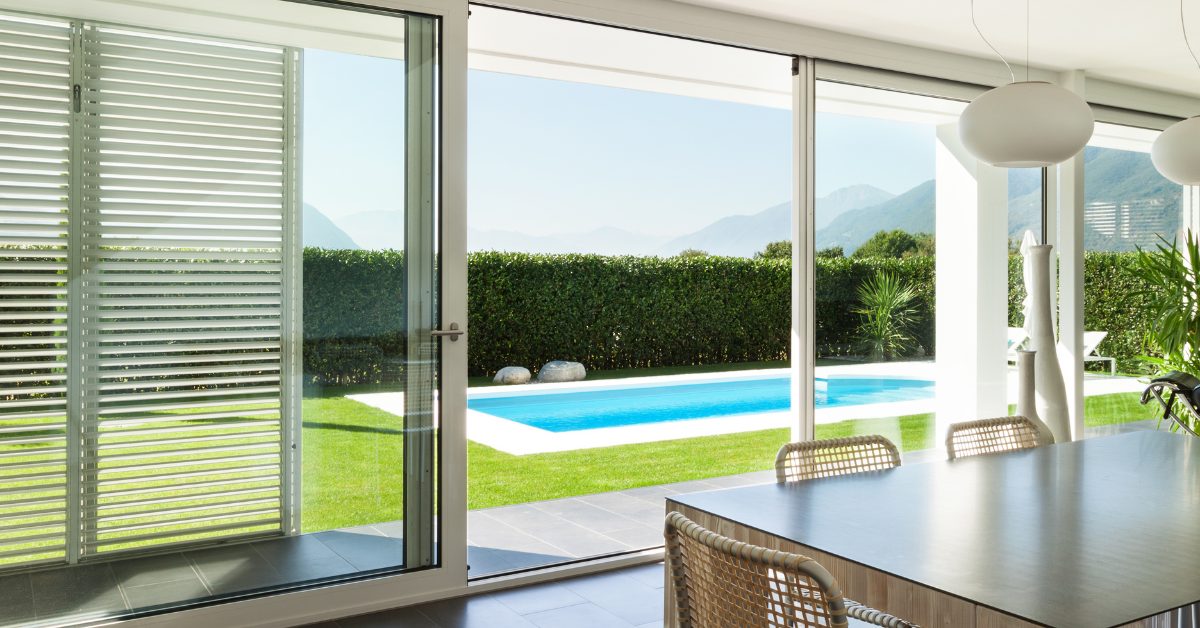Passive solar design is a game-changer for saving money on utility bills and reducing our carbon footprint. If you’re all about energy efficiency and eco-conscious living, you’ve landed in the right spot.
Passive Solar Design Demystified
Passive solar design is a smart approach to making your home work with nature.
By placing windows strategically and using shading, your home can capture sunlight in cold weather and stay cool in hot weather.
Inside, materials like concrete or tile absorb that solar heat during the day, releasing it slowly as the night cools down.
Passive solar design can help you stay warm in winter and cool in summer in a sustainable and practical way. The goal is to create a home that’s not just comfortable, but also efficient and environmentally friendly.
How is Passive different to Active Solar Solutions
Active solar design involves installing solar panels on rooftops or in open areas to generate electricity. These panels use technology to directly convert sunlight into usable energy for your home.
Passive solar design focuses on the layout and materials of a building to naturally regulate temperature. For example, a well-insulated house with large south-facing windows allows sunlight to warm the interior during winter.
In summer, roof overhangs, or shades block excess sunlight, keeping the interior cool without relying on air conditioning. This approach is also cost-effective because it doesn’t require additional equipment or maintenance.
Basking in Savings: Why Passive Solar Design Is A Bright Idea
Your home’s heating and cooling systems can cost you a substantial amount of money annually. On average, American households spend over $900 annually just on air conditioning or space heaters alone. This makes up almost half of their total energy bill!
Water heating systems add even more to the bill. The expense will vary based on electricity tariffs where you live and the efficiency of your water heating system.
Now, think about the impact these energy-hungry appliances have on the environment. When we use them, we’re also contributing to greenhouse gas emissions during energy production.
How you Save
By tapping into the sun’s energy, geographical climate, and specific materials, passive solar design achieves natural heating and cooling without relying on electricity.
One clever trick of passive solar heating involves using thermal mass. Materials like concrete or brick absorb and gradually release heat, much like a warm rock on a chilly evening.
Innovative building materials capture sun-heated air and distribute it throughout buildings. This could slash the need for additional heating even further.
Passive solar cooling is still an evolving strategy. But techniques like ventilation and shading can keep buildings comfortable without using energy-intensive air conditioners.
Location and orientation matter. Putting windows on the sunny side of buildings keeps them warm in winter and cool in summer.
With proper insulation and thoughtful design, solar responsive systems can seamlessly integrate into homes and large buildings. So, if you’re planning to build or renovate, why not explore the endless possibilities of passive solar construction? It’s a win-win for your wallet and the planet!
Beyond the Bottom Line – Additional Perks of Passive Solar Design
Let’s explore why this eco-efficient trend is gaining momentum and changing the way we live.
It Improves Overall Wellbeing
Passive solar design promotes occupants’ health and comfort by creating cozy, well-ventilated indoor spaces. Proper airflow and indoor air quality management help reduce respiratory issues and allergies, improving overall health. (Plus, it cuts down on healthcare expenses!)
Create Comfy Living Spaces
Passive solar design ensures consistent indoor temperatures through smart orientation, using thermal mass, and natural ventilation. This means fewer temperature ups and downs, making homes and workplaces more comfortable.
It Helps You Heal the Environment
By tapping into renewable solar energy, passive solar design slashes carbon emissions and reduces environmental harm. This is crucial for fighting climate change and preserving our planet by cutting reliance on fossil fuels.
Harness the Power of Natural Light
With clever window placement and skylights, passive solar design floods indoor spaces with sunlight. Less need for artificial lighting boosts mood and productivity.
Setting the Record Straight
Misunderstandings about passive solar design often come from not really knowing how it works or getting incorrect information. Sometimes, people just assume things about passive solar design based on old ideas or rumors they’ve heard.
And if someone hasn’t seen passive solar design in action where they live, they might not realize how useful it can be. So, it’s really about spreading the word and showing folks all the great things passive solar design can do!
Myth 1 – You Need to Live in a Sunny Region
Despite popular belief, a solar-driven design approach is not limited to sunny regions. It considers factors like location, climate, and building materials to optimize energy use.
Passive solar design uses windows, dark surfaces and other principles to efficiently heat and cool indoor spaces. This design can be effective in various regions, regardless of sunlight levels.
Myth 2 – It Compromises Building Style
Some people think that solar-responsive design limits how a building looks. Yet, it’s quite flexible and can fit right in with all sorts of architectural styles.
Whether you’re starting new or updating your space, you can balance energy efficiency with aesthetics for a great result!

Myth 3- It Requires Costly Technology
Passive solar design relies on simple and budget-friendly methods. It helps buildings work better without needing costly equipment, which means it’s something people with different budgets can consider.
In conclusion, this technique offers a brilliant strategy for slashing utility bills while reducing our environmental impact. By harnessing the sun’s energy and utilizing smart building techniques, it ensures year-round comfort and significant savings.
It’s a bright idea that’s changing the way we live, one sunbeam at a time!

Marzanne is our eco-enthusiast with an unwavering love for all things green! 🌱 As a self-proclaimed “green queen” and a DIY aficionado, her zeal for eco-conscious living shines through in every aspect of her life. ♻️
Join Marzanne as she shares her quirky, eco-infused adventures, offering tips, tricks, and a sprinkle of good-natured humor on integrating sustainable products, green design, and eco-friendly living into your home. She’s the green-spirited friend you never knew you were missing! 🌿🏡😄

